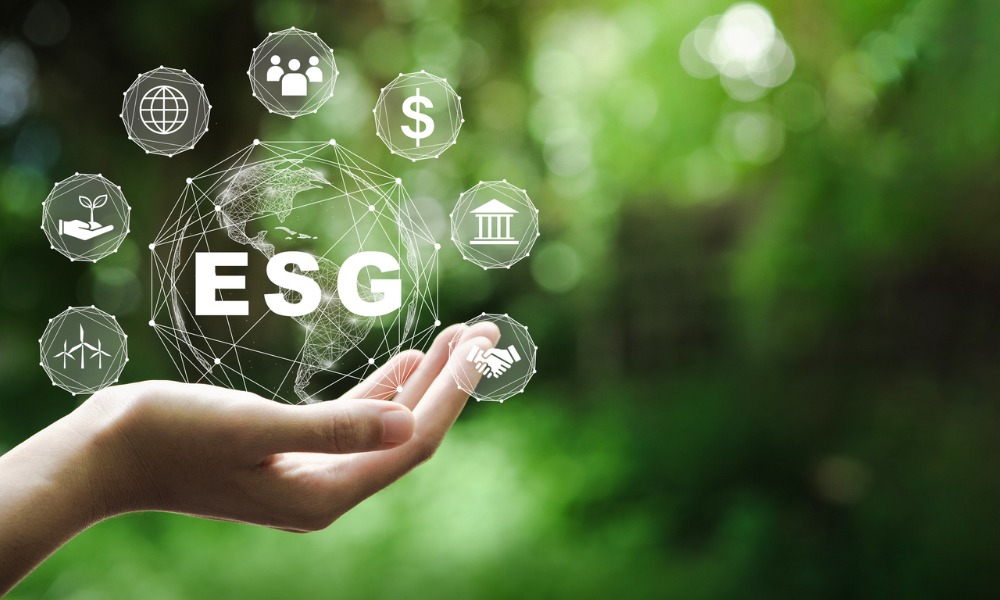ESG risks – Why organizations should leverage an ‘ecosystem’ approach

ESG risks – Why organizations should leverage an ‘ecosystem’ approach | Insurance Business America
Insurance News
ESG risks – Why organizations should leverage an ‘ecosystem’ approach
Less can be better than more, expert says
Insurance News
By
Gia Snape
Managing environmental, social and governance (ESG) risks in an organization can sometimes feel like drinking from the proverbial fire hose, according to Lisanne Sison (pictured), managing director of Gallagher’s ESG and enterprise risk management (ERM) practice.
ESG risks refer to factors that could harm a company’s financial or reputational standing, such as climate change impact mitigation and diversity and inclusion strategies.
“ESG risks have always existed, but the pressure organizations are receiving is different and comes from various stakeholder groups,” she told Insurance Business.
Organizations face greater pressure than ever to address climate and sustainability issues, Sison said, and it can be overwhelming to be faced with many different priorities.
“There’s environmental aspects, there’s climate aspects, there’s regulatory impacts, social impacts, safety impacts – how do I know what I need to focus on as an organization?” she asked.
ESG risks call for more intentional, holistic strategies from businesses, who can leverage what Sison calls an “ecosystem” approach.
What is an ‘ecosystem’ approach to ESG risks?
According to the Gallagher MD, leveraging an ecosystem approach to ESG exposures can help organizations improve their long-term sustainability, increase stakeholder engagement, and gain a competitive advantage in the marketplace.
It’s an approach that calls for leaders to consider how risks are interconnected, and how they can impact organizations as part of a broader hazard ecosystem.
“If you have a workplace injury, you respond to that injury, and when you have a discrimination claim, you respond to that discrimination claim. But proactive organizations and leaders are thinking about why that employee is getting injured or why they are having multiple workers’ compensation claims,” she said. “What is the environment that is creating those claims? Is there a dietary issue? Is it job fit? Is it training?
“So, when I talk about an ecosystem approach to ESG, it means understanding that there are ways that organizations experience ESG risks, and that these can have multiple driving factors. We need to understand what’s driving the risk and how it impacts others. It takes a broader view of our stakeholder groups.”
Finding a starting point for ESG risk strategy
With so many kinds of ESG risks, how can companies know what to focus on, and what they should be considering when they’re developing their own ecosystem approach?
For Sison, it’s best to start with an organization’s goals and objectives. Leaders should consider how ESG impacts their overall business strategy, as this best aligns their ESG activities to their goals and “helps set the stage” for a cohesive plan.
“When you start with ESG and don’t align it with the organization’s strategy, it feels very separate and disconnected from the organization’s identity and goals are,” she explained. “We really encourage folks to think about ESG as part of their overall strategy and not as a separate strategy.”
When it comes to an ESG action plan, less is often more, according to the Gallagher MD. That means companies should pare down to a list of activities that are most meaningful to their identity and business strategy.
“I find that leveraging an enterprise risk management approach can help because it acknowledges that our resources are finite,” she said. “We need to figure out the most important elements of what we’re trying to accomplish as an organization.”
ESG pressures only set to grow
Having a robust and intentional ESG risk strategy will be key for organizations as regulatory and social pressures continue to grow.
Sison acknowledged the “very complicated landscape” for companies that need to navigate different regulatory requirements and strong pro- and anti-ESG sentiments.
“There’s been a lot of pulling back from ESG in a lot of different areas, not all areas, but some areas,” she said. “There’s been a hesitation to engage, but it’s all about balancing those different stakeholders.
“I think the best advice that I can give to organizations is that they think about what they want to be in five, 10 or 20 years from now, and to think about which of these ESG risks are material to that future vision of themselves.”
Do you agree with Sison’s ‘ecosystem’ approach to ESG risk management? Sound off in the comments.
Related Stories
Keep up with the latest news and events
Join our mailing list, it’s free!






